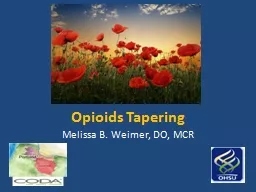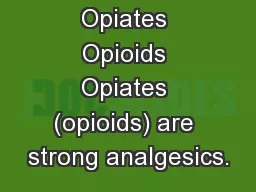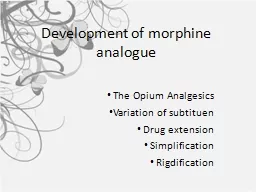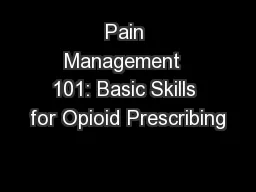PPT-Calculating and Using Morphine Equivalent Doses of Opioids
Author : yoshiko-marsland | Published Date : 2020-04-10
Teresa Hudson PharmD PhD Associate Professor of Psychiatry UAMS COM Department of Psychiatry Wednesday June 20 2018 ARIMPACT TEXT 5014060076 Event ID 2507223985
Presentation Embed Code
Download Presentation
Download Presentation The PPT/PDF document " Calculating and Using Morphine Equiva..." is the property of its rightful owner. Permission is granted to download and print the materials on this website for personal, non-commercial use only, and to display it on your personal computer provided you do not modify the materials and that you retain all copyright notices contained in the materials. By downloading content from our website, you accept the terms of this agreement.
Calculating and Using Morphine Equivalent Doses of Opioids: Transcript
Download Rules Of Document
" Calculating and Using Morphine Equivalent Doses of Opioids"The content belongs to its owner. You may download and print it for personal use, without modification, and keep all copyright notices. By downloading, you agree to these terms.
Related Documents














